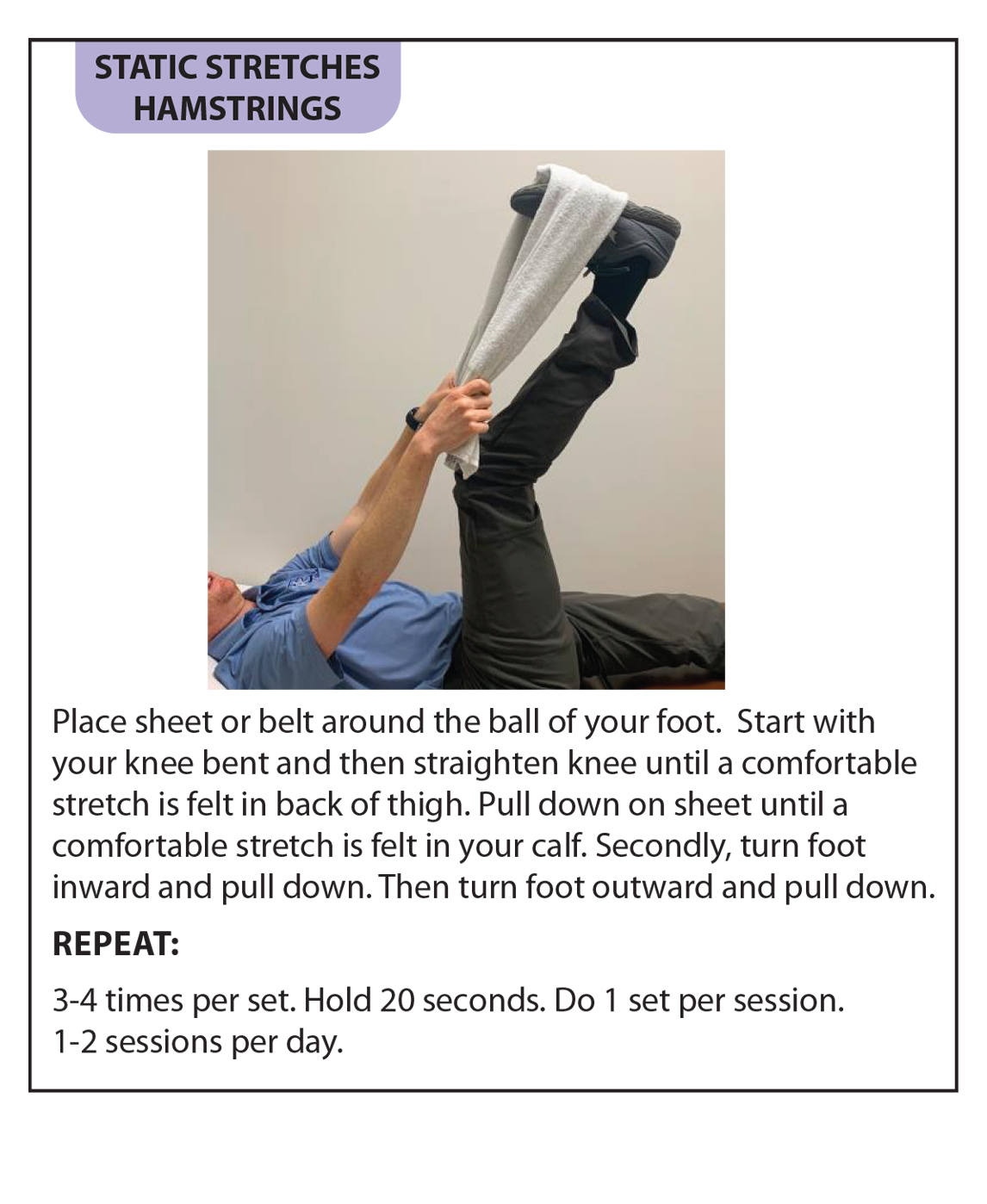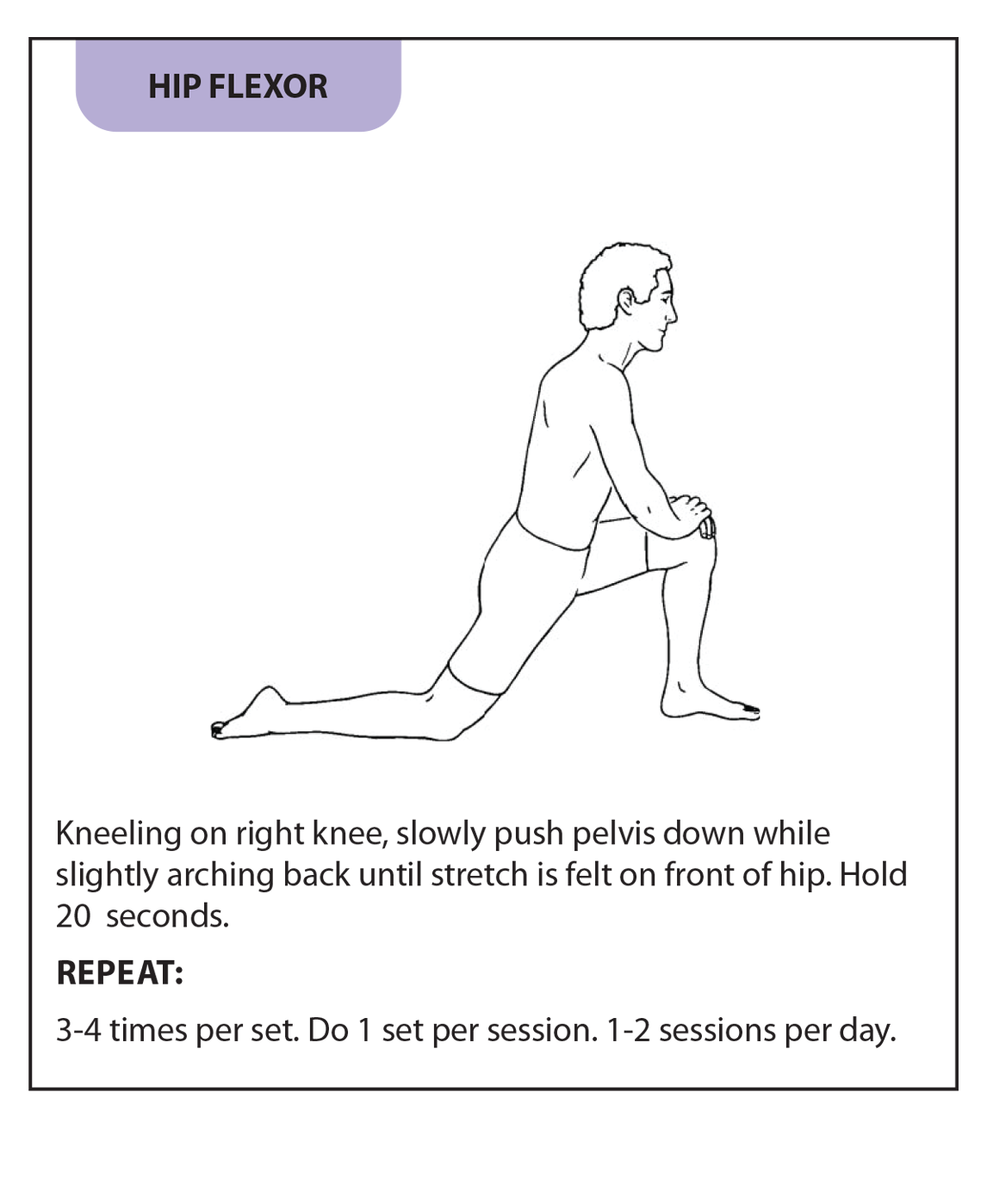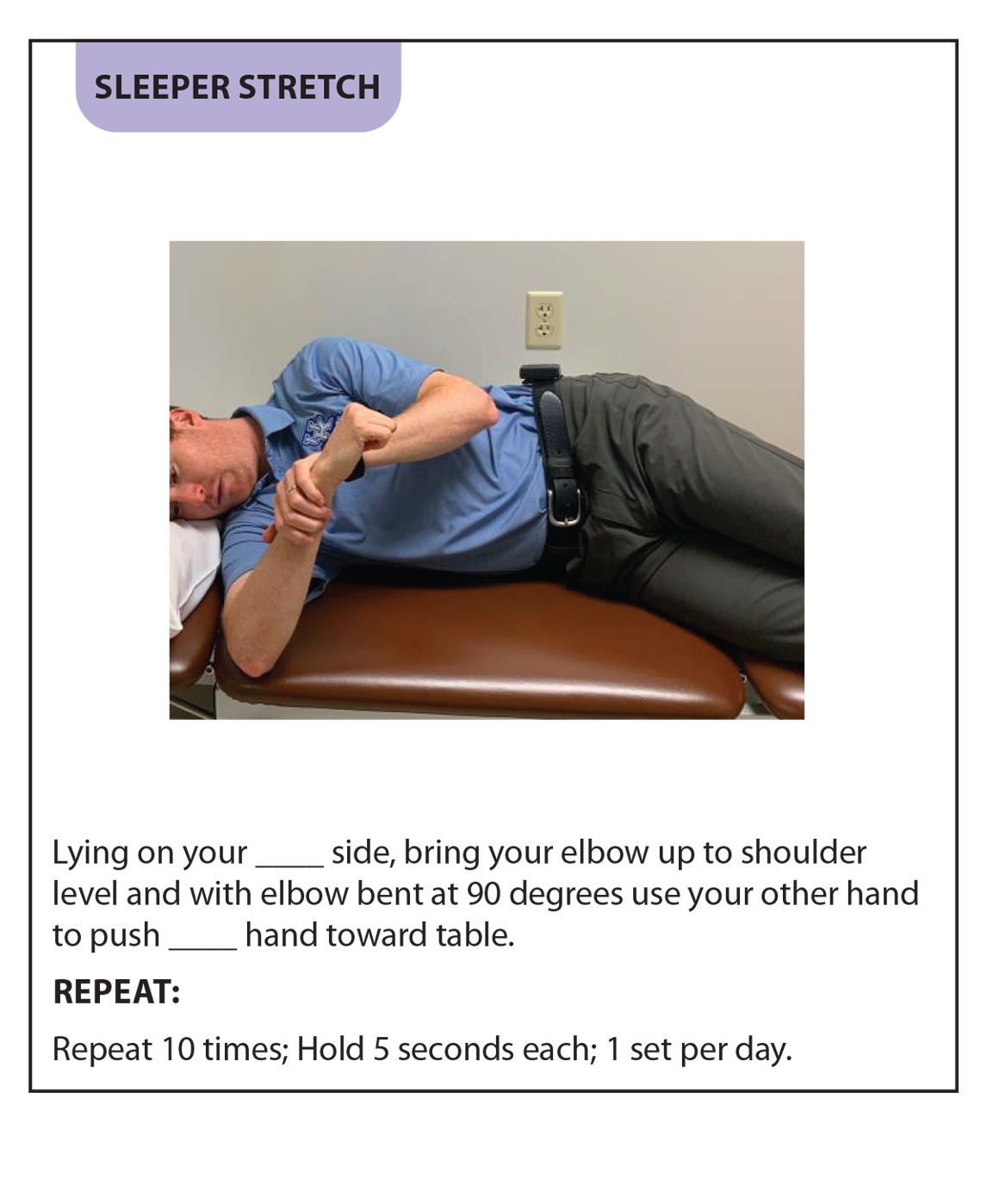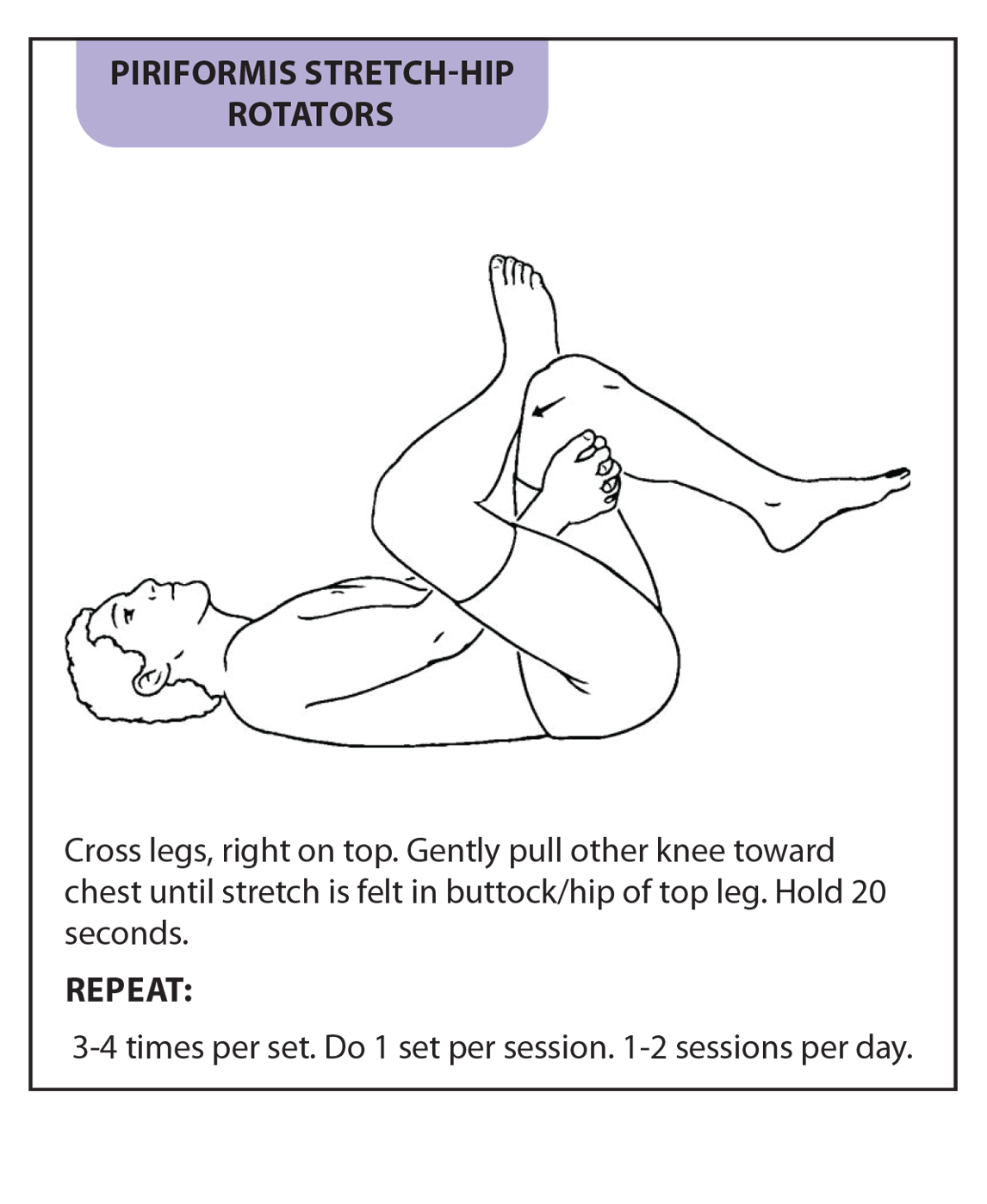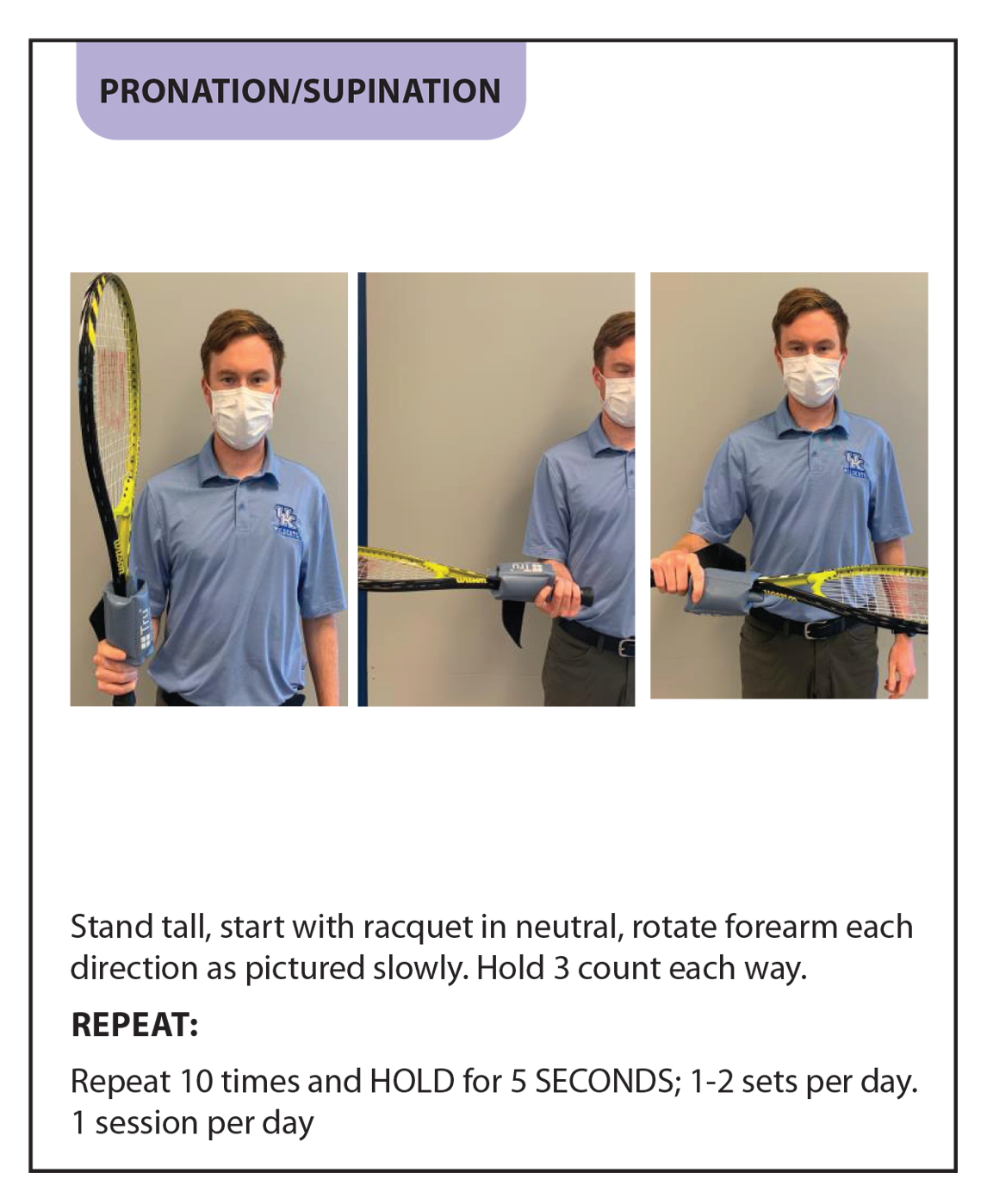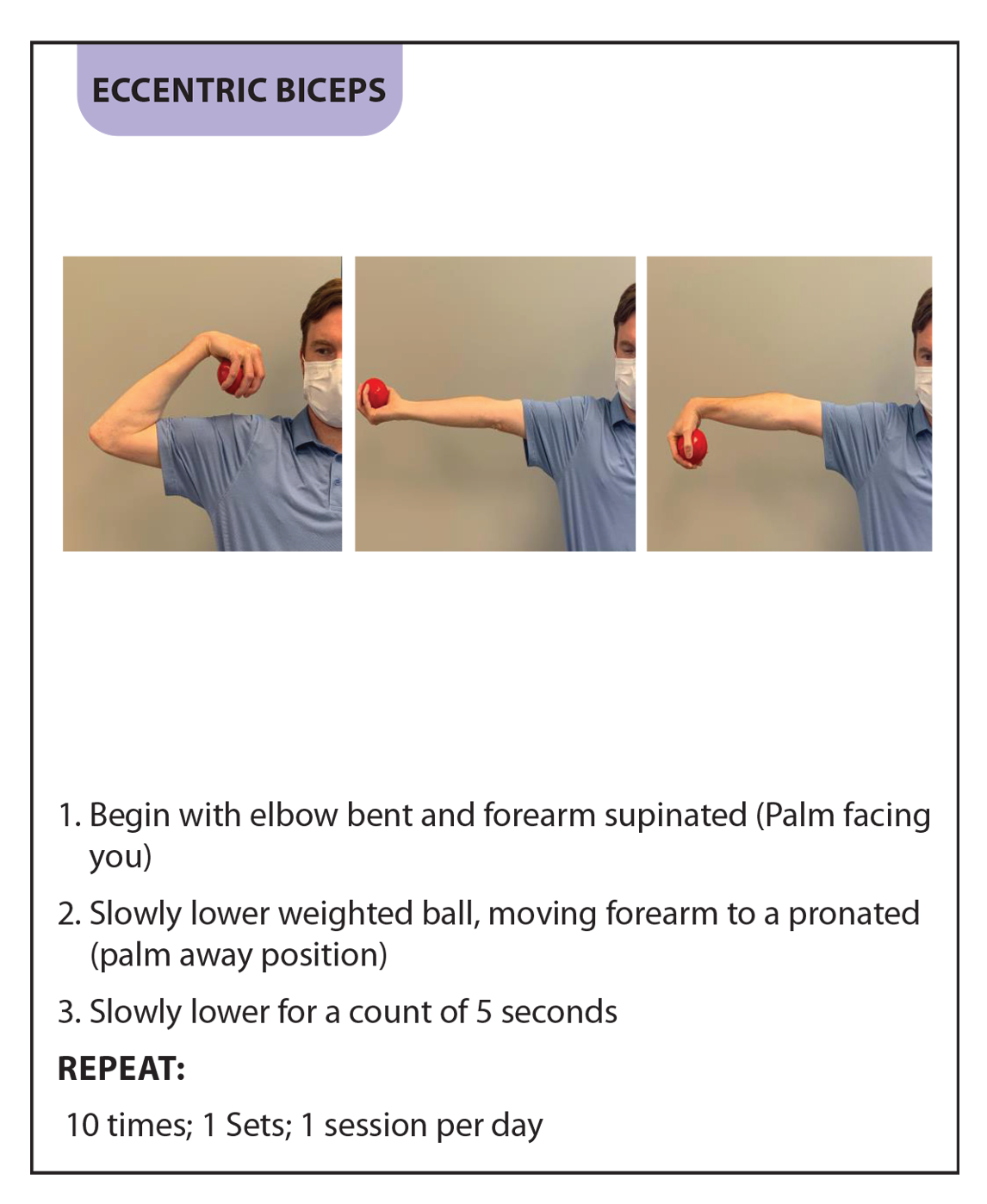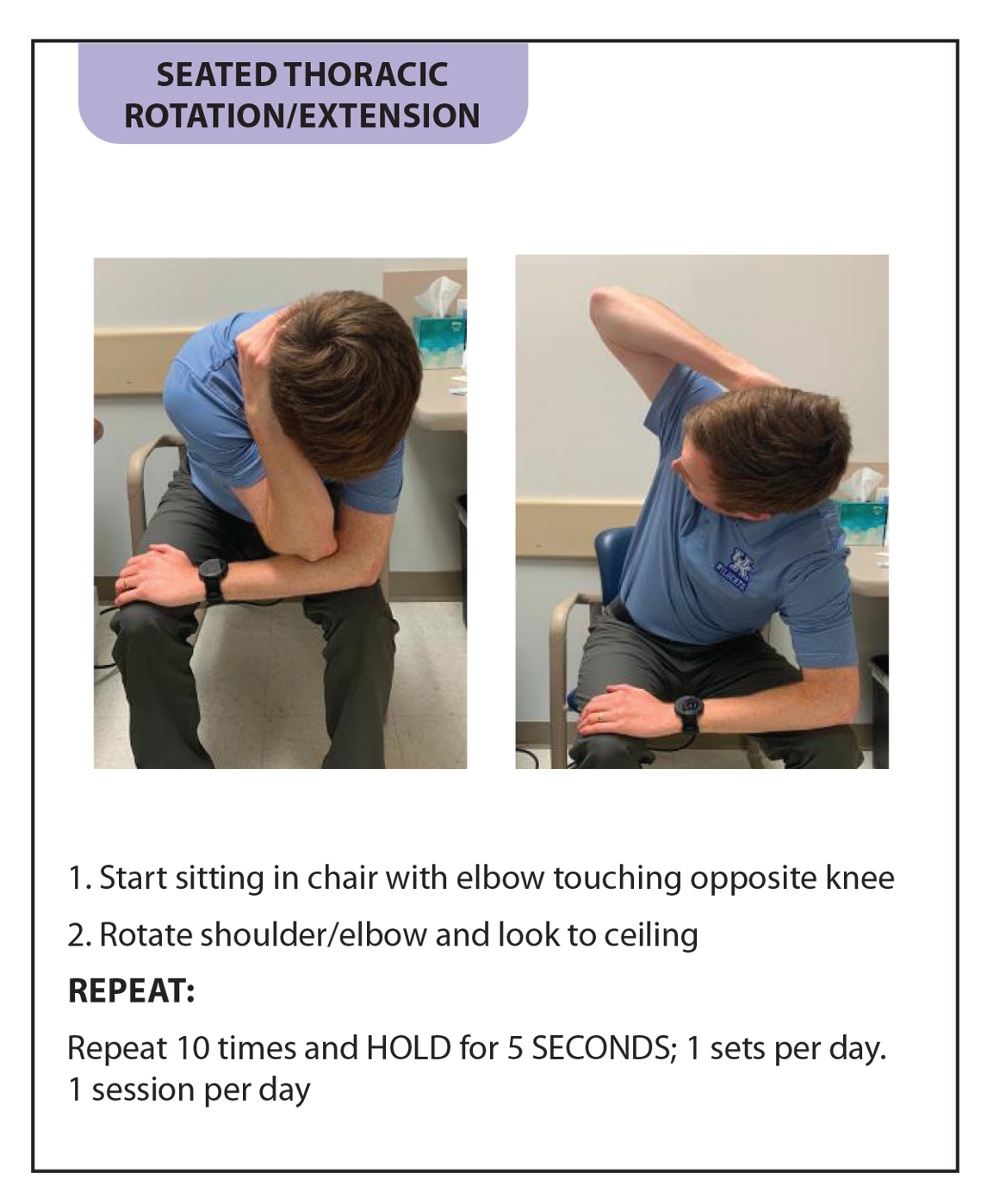There are 2 general types of stretching programs, with different effects on and different goals for the muscles, the static and the dynamic stretch. The static stretch is performed slowly, reaching the point of maximum muscle length, and then holding in that position for 15- 20 seconds. Its purpose is to reset the muscle’s resting length in a longer position, so it will become more pliable over time. It is effective in improving flexibility after injury or when inflexibility is known to be a risk factor for injury or deleterious for performance. Examples would include a tight hamstring muscle after a muscle pull, a tight trunk muscle in low back pain, decreased shoulder range of motion as a risk factor for shoulder injury, or to maintain flexibility over a tournament season. While static stretching will increase flexibility, it will also result in a short term (15- 30 minutes) decrease in muscle strength, so it should be performed on days when you are not practicing or playing matches.
The dynamic stretch is performed faster and more rhythmically, reaching the end point of the stretch and then moving smoothly away from it within 2- 5 seconds. Its purpose is to quickly decrease the resting tension in the muscle, making it pliable and preparing it for the activity. It also increases the internal muscle temperature. It is effective when performed within 10- 15 minutes prior to play, as a “warm up” to loosen up key parts of the body, but is just as, or even more, important immediately after play, in the “warm down”, helping to decrease the muscle tightness and soreness that results from repetitive motions during play. Dynamic stretching does not result in long term changes in muscle flexibility, so it must be used with static stretching in the overall program.
Static stretches are most commonly used for muscles that are known to frequently develop tightness, such as the hamstrings, hip rotators, back flexors, trunk rotators, shoulder rotators, and elbow flexors. Dynamic stretches may address individual muscles but are also commonly used as warm ups for muscles that are active in patterns of motions. Examples would include arm rotation overhead and by the side, combined trunk and hip rotation, combined knee and ankle rotation, and the entire motions of the serve, forehand, and backhand.
Stretching exercises may be done daily in order to maintain baseline flexibility. They should be utilized as part of an integrated and balanced conditioning program that includes all of the “4 S’s”, which will be covered in other Ask the Doc segments.
There are many web sites and apps that provide detailed information regarding many types of stretching exercises. It is best to know your goals for your stretching program- improving certain tight areas, maximizing certain motions, working on previously injured areas, providing overall improved flexibility- and pick a variety of exercises that will address these needs and goals. We will provide samples of exercises that have worked in our experience and will be glad to discuss them with you.

